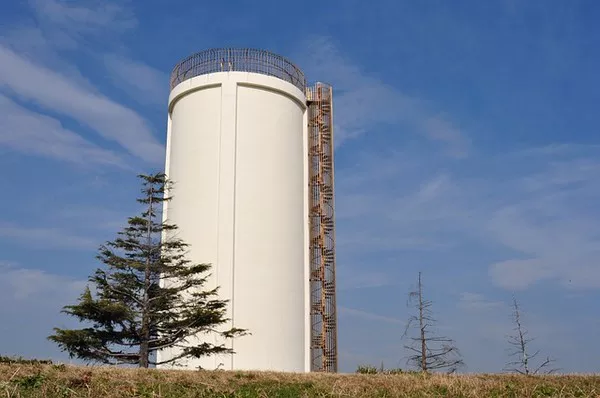Onsite sewage disposal systems, commonly known as septic systems, play a crucial role in managing wastewater in areas without access to centralized sewer systems. These systems are prevalent in rural and suburban areas, providing an efficient and environmentally friendly way to treat and dispose of household wastewater. Understanding how onsite sewage disposal systems work, their components, maintenance requirements, and environmental impact is essential for homeowners, policymakers, and environmentalists alike.
Components of Onsite Sewage Disposal Systems:
A typical onsite sewage disposal system consists of several key components:
Septic Tank:
The septic tank is the primary component of the system where wastewater from the household flows.
It is typically made of concrete, fiberglass, or plastic and is buried underground.
The tank separates solid waste from liquids, allowing the solids to settle at the bottom as sludge while scum floats to the top.
Bacteria in the tank help break down organic matter in the wastewater.
Drain Field:
After treatment in the septic tank, liquid effluent flows into the drain field or leach field.
The drain field consists of perforated pipes buried in trenches filled with gravel or other porous materials.
The effluent is distributed through these pipes and percolates into the soil, where it undergoes further treatment and filtration.
Soil:
Soil plays a vital role in the treatment and disposal of wastewater in onsite sewage disposal systems.
It acts as a natural filter, removing impurities and harmful pathogens from the effluent as it percolates through the soil layers.
Soil characteristics such as texture, permeability, and depth influence the effectiveness of the system.
Distribution Box and Pipes:
The distribution box distributes effluent evenly to the drain field pipes.
Pipes carry effluent from the septic tank to the distribution box and from the distribution box to the drain field.
Functioning of Onsite Sewage Disposal Systems:
The functioning of onsite sewage disposal systems involves several key processes:
Collection and Separation:
Wastewater from toilets, sinks, showers, and other household sources flows into the septic tank.
In the tank, solid waste settles to the bottom, while scum floats to the top, leaving relatively clear liquid effluent in the middle.
Anaerobic Digestion:
Bacteria in the septic tank break down organic matter in the wastewater through anaerobic digestion, converting it into simpler compounds.
Filtration and Absorption:
Liquid effluent from the septic tank flows into the drain field, where it undergoes further treatment through filtration and absorption by soil.
Soil microorganisms further degrade organic matter and remove pathogens, nutrients, and other contaminants from the effluent.
Natural Treatment:
As effluent percolates through the soil, natural biological, chemical, and physical processes occur, leading to the removal of contaminants and the purification of the wastewater.
Cleaned water eventually recharges groundwater or enters surface water bodies, contributing to the water cycle.
Importance of Maintenance:
Proper maintenance is essential to ensure the efficient and long-term operation of onsite sewage disposal systems:
Regular Pumping:
Septic tanks should be pumped regularly to remove accumulated sludge and scum.
The frequency of pumping depends on factors such as tank size, household size, and usage patterns.
Inspection and Maintenance:
Periodic inspection of the septic tank, distribution box, and drain field is necessary to detect any signs of damage, leaks, or clogs.
Repairs or replacements should be carried out promptly to prevent system failure and environmental contamination.
Water Conservation:
Conserving water reduces the hydraulic load on the septic system, prolonging its lifespan and reducing the risk of overloading and failure.
Environmental Impact:
Properly designed and maintained onsite sewage disposal systems have minimal environmental impact:
Groundwater Protection:
Adequately treated effluent from septic systems replenishes groundwater resources, contributing to groundwater recharge.
However, poorly maintained or malfunctioning systems can contaminate groundwater with pollutants, posing risks to human health and ecosystems.
Nutrient Management:
Nutrients such as nitrogen and phosphorus in wastewater can promote algal blooms and eutrophication in water bodies if not properly treated.
Effective onsite sewage disposal systems remove nutrients through biological processes, reducing the risk of water pollution.
Habitat Protection:
Contaminants from malfunctioning septic systems can degrade aquatic habitats and harm aquatic organisms.
Properly functioning systems help maintain water quality and protect aquatic ecosystems.
Regulatory Framework:
Regulations governing the installation, operation, and maintenance of onsite sewage disposal systems vary by jurisdiction:
Permitting and Approval:
Homeowners may need permits or approvals from local health departments or environmental agencies before installing a septic system.
Regulations typically specify design standards, setback requirements, and minimum lot sizes for septic systems.
Inspection and Compliance:
Some jurisdictions require periodic inspections of septic systems to ensure compliance with regulations and proper functioning.
Non-compliance may result in penalties, fines, or enforcement actions.
See Also What Can Cause Sewer Gas Smell In House
Conclusion:
Onsite sewage disposal systems are vital for managing wastewater in areas without access to centralized sewer systems. Understanding the components, functioning, maintenance requirements, and environmental impact of these systems is essential for ensuring public health, protecting the environment, and promoting sustainable development. By following best practices in design, installation, operation, and maintenance, homeowners can maximize the efficiency and longevity of their onsite sewage disposal systems while minimizing their environmental footprint. Regulatory agencies play a crucial role in overseeing the proper management of septic systems and safeguarding public health and the environment.

